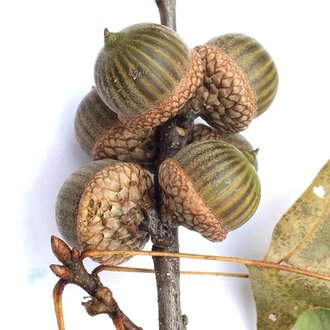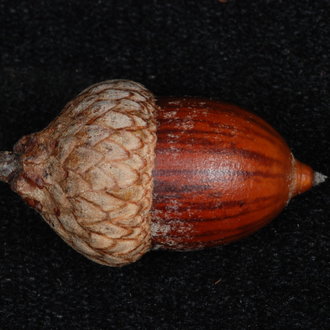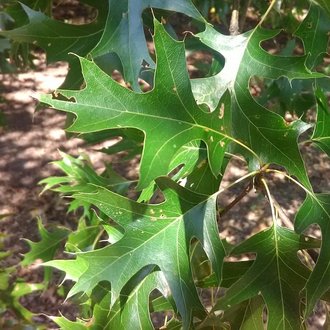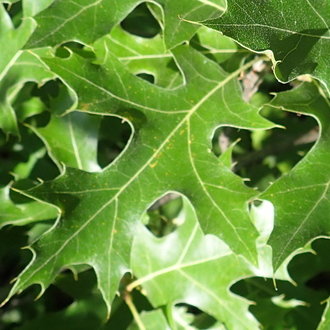Pin Oak vs Hill's Oak
This guide is under construction and has not been published yet. It may have errors. When in doubt, double-check other sources for definitive ID.These species have little overlap in habitat, with pin oak preferring poorly-drained bottomlands and northern pin oak favoring excessively-drained uplands. However, they are still sometimes confused, especially when planted in landscaping in areas they would not naturally be found. Their leaf shapes are extraordinarily similar, and both retain dead branches. The common name "Northern Pin Oak" for Q. ellipsoidalis may be the largest source of confusion between these two species, which is one reason we avoid using that term.
Pin Oak (Quercus palustris) | Hill's Oak (Quercus ellipsoidalis) |
A fast-growing, short-lived red oak of poorly-drained sites, with a large, heavy central trunk and numerous small side branches. | A cold-hardy, drought-tolerant oak mostly found in a small region of the upper midwestern U.S. Also called Northern Pin Oak, but more closely related to other species than pin oak. |
Acorn cap covers little of the nut. Smaller acorns with stout shape. Photo © Ron Burkert, CC BY 4.0. | Acorn cap covers 1/3rd to 1/2 the nut. Longer acorns, and long relative to their width. Photo © Doug Goldman, CC BY 4.0. |
Leaves average fewer awns or points (10-30) at lobe tips. Sinuses more open, not curving back around to close in a C-shape. Photo © Claire Secrist, Public Domain. | Leaves average more awns or points (15-55) at lobe tips. Sinuses between lobes more likely to curve to form or almost form a C-shape. Photo © Rob Foster, CC BY 4.0. |
References & External Resources
These short lists show only links helpful for ID. For a complete list of references and resources also covering other aspects of ecology, visit the links section of the full article on each plant, which is the first entry here.






